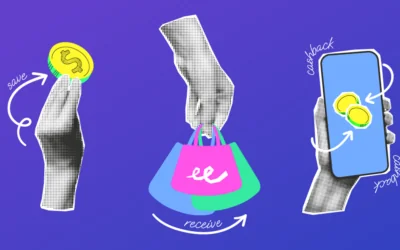As you have probably noticed, the global pandemic has greatly increased the speed and amount of digital transformation in all industries and the financial sector is no exception. Customer needs and demands are rapidly changing, making their expectations on banking services way higher than before. Thus, financial institutions must adapt and upgrade their value propositions, making banking personalization more than just a “nice to have”.
McKinsey reported that the effects of Covid-19 have accelerated the digitalisation of companies´ supply and demand offerings by almost 7 years. In the US alone, E-commerce penetration through digital channels grew from 17% to 33% in the final quarter of last year.
Despite such rapid levels of digitalisation and personalization, one sector that appears to be lagging behind is banking. A recent analysis by FICO of consumers and over 300 financial institutions suggests that almost three-quarters of banks are either slowly progressing or lagging, while only 6% are leading the way with best-in-class personalization capabilities. The European banks surveyed were found to be ahead in terms of customer satisfaction, while North American banks were found to be struggling to offer modern, personalized banking solutions. Furthermore, only 3% of traditional bank executives think their company has taken the necessary measures to protect their businesses against digital disruption.
In particular, omnichannel delivery was a pain-point for banks, as 62% struggled with consistency of services across branches, online, mobile and call centers. This contrasts with FinTech firms, where respondents were highly confident in their delivery of services across multiple channels.
So, why are these banks lagging behind in terms of banking personalization? Let’s take a look at 4 possible reasons.
1. Outdated Technology
The majority of banks still run on core banking systems written in COBOL, a programming language that is over 60 years old. This outdated technology comes from the time when computers were nowhere near as efficient as what we work with today, meaning that modern tools such as Java or Python, as well as modern programmers themselves, don’t necessarily work well with old tech. “The stakes are especially high for the financial industry, where an estimated $3 trillion in daily commerce flows through COBOL systems. The language underpins deposit accounts, check-clearing services, card networks and much more” CNBC reports. This won’t be a surprise to everyone either. Gartner predicts the extinction of 80% of heritage financial service providers by 2030, should they fail to catch up to digital pioneers, such as challenger banks and fintech disruptors.
2. Outdated Banking Strategies
Despite the old technology, another issue is the strategies that banks employ. Many are currently aiming to meet business needs from 20 years ago, when financial institutions centered themselves around private, premium and retail banking. Banking personalization was seen as a privilege reserved for high-net-worth private banking clients with access to dedicated wealth management advisors. Nowadays, using Strands’ innovative banking solutions, high levels of detailed, personalized offerings are readily available. Therefore Banks would do well to embrace a customer-first mindset instead of a product-first strategy in order to improve personalization. Unfortunately, some older and more traditional banks are yet to reap the benefits of personalized banking services, as they do not place it as a priority.
3. Lack of personal touch
Newer channels such as push notifications, SMS, In-app inboxes, mobile web messaging, In-app messaging, MMS and mobile wallets are growing the fastest. As firms evolve into virtual assistants, they will pose simple questions or suggestions to consumers through interactive messaging such as rich communication services (RCS) or interactive push messages.
4. Lack of digital education
Despite the trend towards digital transformation, many customers may struggle with learning the basics towards digital banking. While most are able to track their balances on a mobile device, the comfort and confidence level most likely goes down from there. Therefore banks arguably need to help customers with their digital skills and make it accessible for the masses, with clear guidance and advice. Such breakdowns and walkthroughs of Strands’ solutions are always available. To improve the levels of banking personalization, banks must both drive customers to digital channels and help users become more confident in using them, from transferring money through paying utility bills to saving and borrowing.
These 4 factors may be some of the reasons why the banking sector is lagging behind in terms of personalization. To make sure that your bank doesn’t fall into this category, get in contact with Strands today so see how we can help you with our digital banking solutions.




